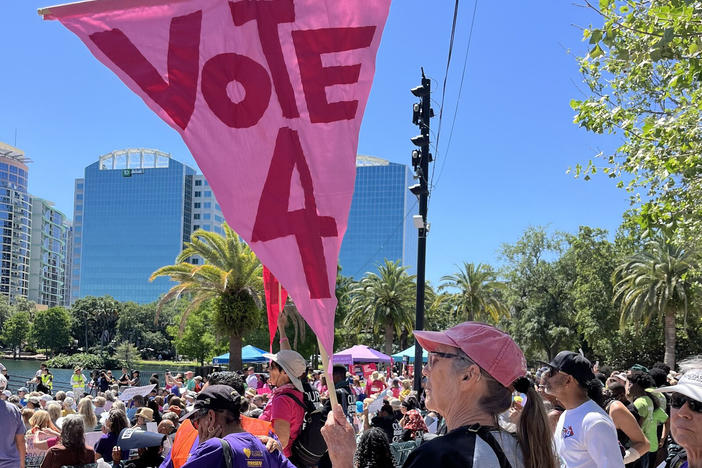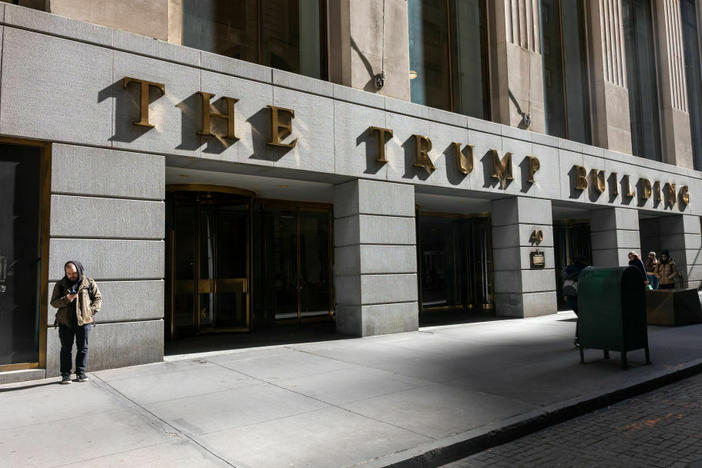Section Branding
Header Content
The Supreme Court keeps Texas abortion law in place, but agrees to review it
Primary Content
The court will consider the legality of the law on Nov. 1. The highly unusual court action is an indication of deep internal splits within the court.
Transcript
SARAH MCCAMMON, HOST:
The U.S. Supreme Court has agreed to review a controversial Texas abortion law. On November 1, it will consider the unusual way Texas enforces it and whether the Department of Justice has the right to sue to block it. But the court refused to put a hold on the law until then. Joining us now to talk about all of this is NPR legal affairs correspondent Nina Totenberg.
Hi, Nina.
NINA TOTENBERG, BYLINE: Hi, Sarah.
MCCAMMON: OK, Nina, what is the impact of the Supreme Court's decision to review this abortion law known as SB 8?
TOTENBERG: Well, first, it allows the law to remain in place. And that means that, for all intents and purposes, women in Texas can't access abortions in the state. And that's because the law bans abortions after about six weeks of pregnancy, which is before many, if not most, women know that they're pregnant. But the court said it would hear arguments regarding the law on November 1 on a super-expedited basis. And that's a timeframe that is wildly unusual.
Moreover, the justices are not directly considering whether the law is constitutional. Instead, the key question that it's going to decide or at least hear arguments on appears to be whether the United States can sue the state of Texas in federal court, and by doing that, bar the state, state court judges, state court clerks, other state officials and private parties from enforcing SB 8. That, of course, is the law that bans abortion after six weeks and puts enforcement in the hands of private citizens instead of state officials. I think this question may telegraph that the court's conservative majority is less than enthusiastic - let's put it that way - about blocking the Texas law.
MCCAMMON: And this is the second time the court has acted on this case. In early September, of course, it refused to block the law from going into effect. And there's been quite a bit of legal back-and-forth in the lower courts. How did we get to this latest order?
TOTENBERG: After the Supreme Court allowed the law to go into effect in September, turning away a challenge from clinics that perform abortions, the Justice Department sued the state of Texas. And a federal judge issued a temporary injunction barring Texas state judges and clerks from accepting these private lawsuits authorized under the law. But the U.S. Court of Appeals for the 5th Circuit, which oversees Texas, blocked that order, reinstating the law and once again making abortions unavailable in the state after six weeks of pregnancy. The Biden administration then went to the Supreme Court, asking it to temporarily block the law while the case plays out in the lower courts. It didn't block it, but it said, OK, we'll hear your case, Biden administration.
MCCAMMON: And does today's decision from the court give us any insight, Nina, into the justices' thinking as they get ready to consider this Texas law and also the other major abortion case out of Mississippi that's coming up later this year?
TOTENBERG: This action today has all the earmarks of a court that is now deeply split and not particularly deferential to each other, with the conservative supermajority having the whip hand. It appears to be the result of two internal Supreme Court rules. It takes the votes of only four justices to grant review in a case, but it takes the votes of five justices to reverse a lower court decision like this one. We don't know exactly how the justices voted on this. Only Justice Sotomayor noted a dissent. But since the vote in September was 5-4 to allow the law to go into effect, I think we can infer that, at minimum, five justices refused to budge on the question of temporarily blocking the law while the justices consider it.
MCCAMMON: NPR legal affairs correspondent Nina Totenberg.
Thank you, Nina.
TOTENBERG: Thank you, Sarah. Transcript provided by NPR, Copyright NPR.
Bottom Content



